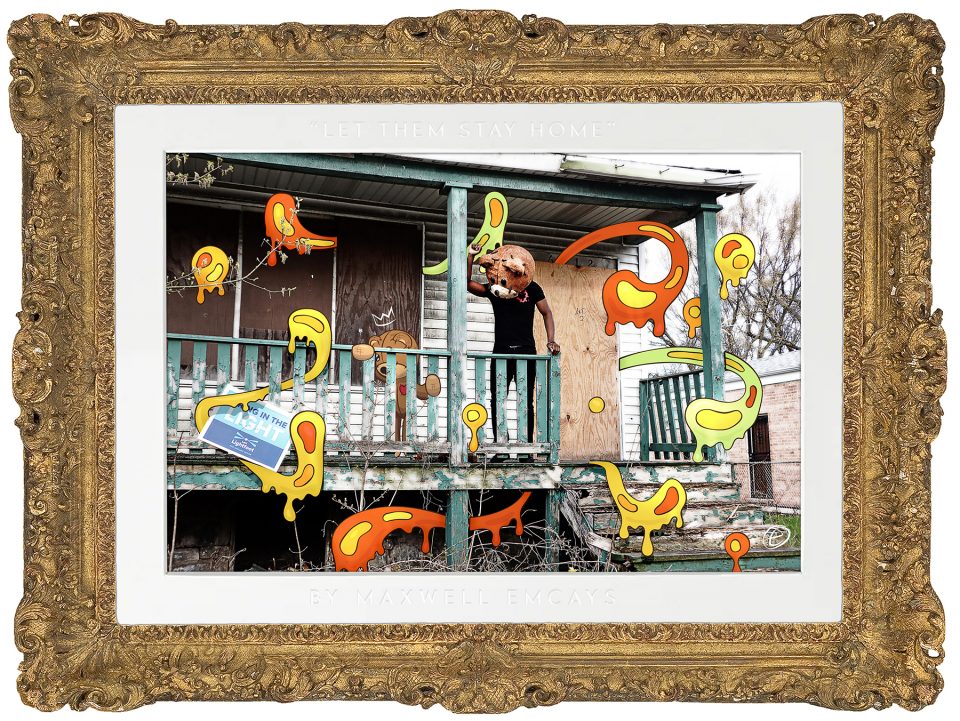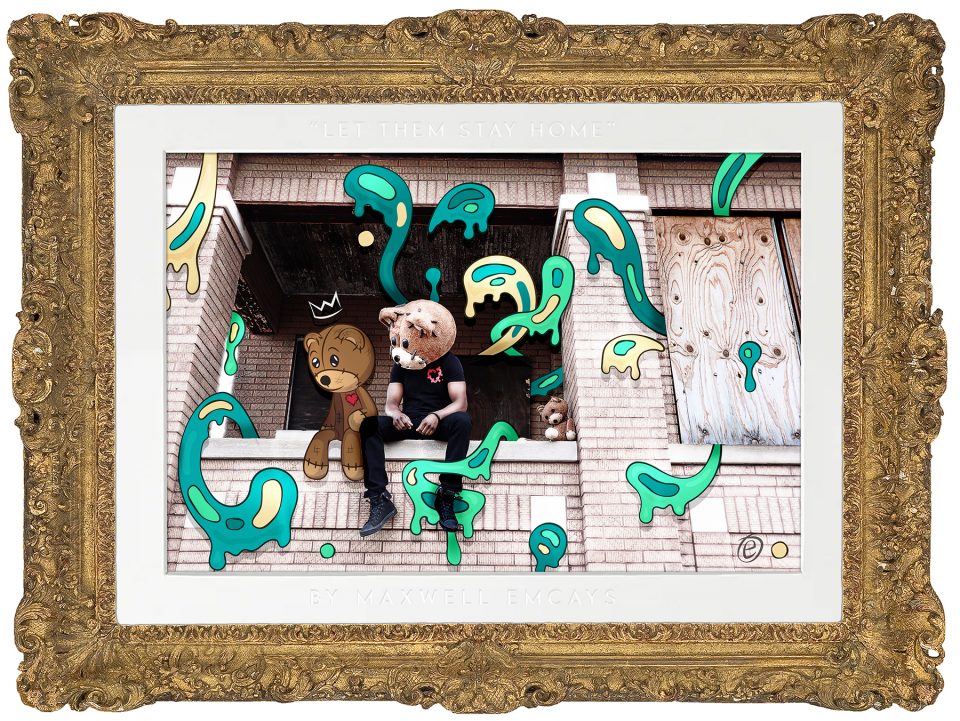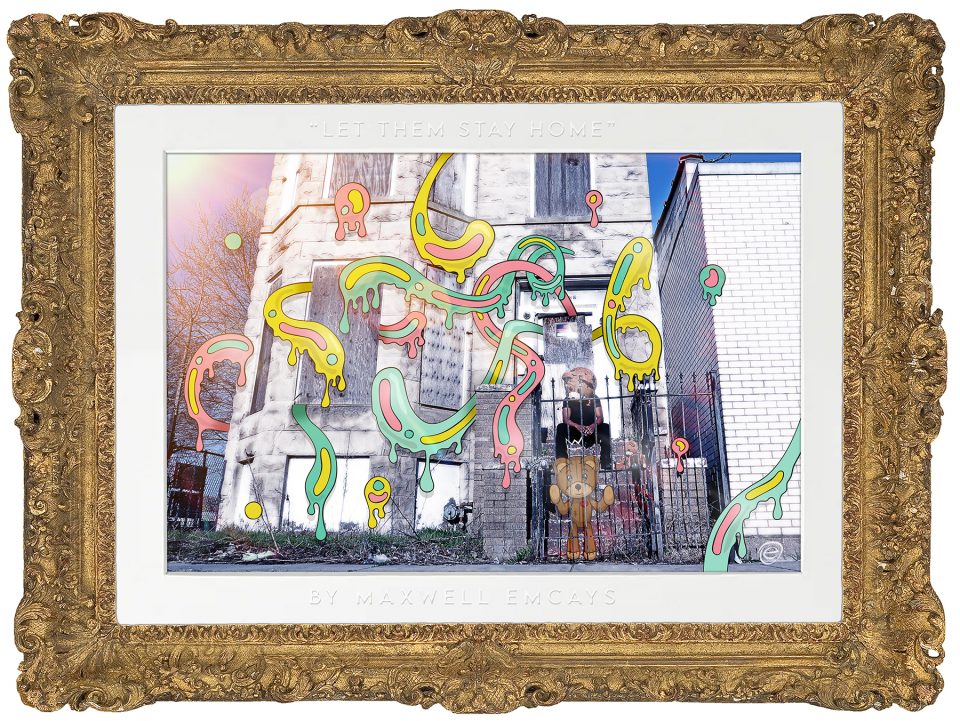
As a visual artist, native Chicagoan Maxwell Emcays speaks a specific language. He speaks the language of creativity and purpose. His most recent visual art gallery, “Let Them Stay Home,” is an exploration in the stark difference in living conditions as it relates to the upper class and lower class. He examines the word “home” and its many different meanings. His works are focused on the southside of Chicago, using dilapidated buildings as his backdrop and bringing them to life with splashes of bright color.
Rolling out spoke with Emcays about his artistry, the importance of his visual gallery and the message he wishes to convey.
Talk about how you were inspired to do art.
When going to college I was told that if I do what I love, I will figure out a way to make a living. I wanted to create unique interesting expressions. I did not know what I was doing was called art.
Explain your creative process.
My creative process involved me finding a perspective or process that is not being conveyed. I approach my creative process like an inventor looking for innovation.

Talk about your “Let Them Stay Home” visual art gallery. Why is this one so important?
It is important because it is a dangerous thing when the voices of the underserved are not heard by the masses.
What would you say is the overarching message you want to share with your art?
I would like to point out the disconnect between the struggles of the people and the decisions of those in power.
Why is it important for you to shed the light on racial disparity in Chicago during this COVID-19 crisis?
It is important to address this now because widespread solutions are being applied to address COVID-19 while ignoring the struggles of those that have suffered for many generations. If not now, then when?

What is the significance of the bear in your pieces?
The teddy bear’s name is Terrence. Terrence is like many stuffed animals placed at the site where someone has lost their life. I use Terrence in my work to symbolize lost innocence. I have children’s books around Terrence’s story, and also use Terrence in my charitable project, Never Forget Chicago. In the series “Let Them Stay Home,” I use Terrence to represent the loss of innocence present in the dilapidated conditions where children should be able to call home.
Why do you use abandoned buildings?
The abandoned houses are meant to contrast privileged conversations about home. These boarded homes are commonplace in Chicago neighborhoods where “home” means something very different than it does downtown or on the NorthSide.

Maxwell’s visual gallery is running until mid-June.
The virtual art exhibit can be found at https://maxwell.emcays.com/stay-home/

















